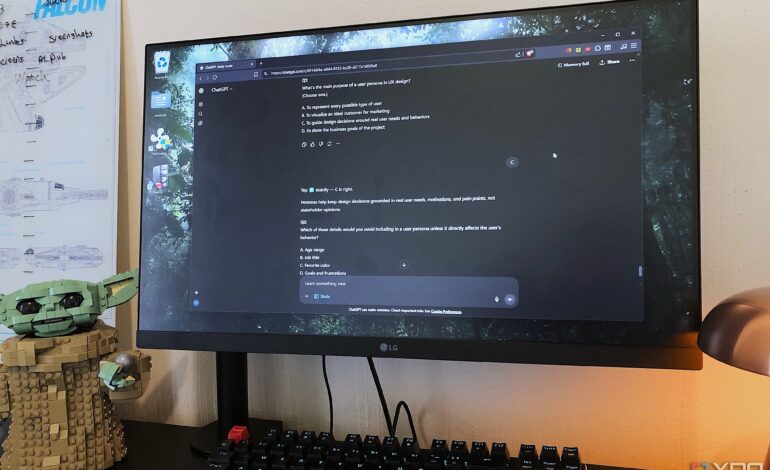ChatGPT’s Study Mode Surpasses NotebookLM for Learning Efficiency

Users of AI-powered educational tools are increasingly exploring new features to enhance their learning experiences. In a recent shift, a user has transitioned from NotebookLM to ChatGPT’s Study Mode, discovering significant advantages in productivity and engagement. This change highlights the evolving landscape of AI-assisted learning and the importance of interactive study environments.
Understanding ChatGPT’s Study Mode
ChatGPT’s Study Mode, introduced in early 2023 by OpenAI, is designed to facilitate guided learning instead of simply providing answers. This feature transforms the chat interface into a structured learning environment, fostering deeper comprehension of topics. According to OpenAI’s official blog, Study Mode allows users to work through problems step by step, promoting an interactive and customized learning experience.
Unlike traditional chat methods, where users receive direct answers, Study Mode engages learners by asking questions and encouraging them to articulate their understanding. This collaborative approach aims to cultivate a more profound grasp of subjects, particularly beneficial for complex fields such as User Experience (UX) Design.
Comparative Analysis: Study Mode vs. NotebookLM
The primary distinction between NotebookLM and ChatGPT’s Study Mode lies in how they handle knowledge acquisition. NotebookLM requires users to upload notes and documents, ensuring that the information is verifiable and referenceable. This can be advantageous for structured research but may also create hurdles in terms of convenience.
In contrast, Study Mode draws from ChatGPT’s extensive pre-trained knowledge base. Users can initiate study sessions without the need to gather and upload materials, allowing for immediate engagement. While this convenience enhances usability, it also necessitates that users verify the information independently, as the tool may not always cite sources or fact-check responses automatically.
The user experience reveals that Study Mode adapts to various learning contexts. By starting with a simple prompt about user experience research, the user observed that ChatGPT actively solicited feedback on their existing knowledge. This iterative questioning process not only enhanced engagement but also encouraged deeper exploration of the topic.
The interactivity of Study Mode extends to its quizzing capabilities. Unlike NotebookLM’s Quiz feature, Study Mode allows users to direct the flow of the quiz, integrating additional questions and prompts. This adaptability proved crucial for the user, who applied it to their design course tests, enhancing both understanding and retention of material.
While NotebookLM excels in structured research and long-term note management, ChatGPT’s Study Mode offers a dynamic, conversational learning experience. This shift has transformed the user’s study habits, indicating a preference for interactive learning tools that facilitate active engagement over passive consumption of information.
In conclusion, the integration of ChatGPT’s Study Mode into the user’s workflow exemplifies a growing trend towards interactive educational tools. As AI continues to evolve, the pursuit of effective learning methods remains at the forefront, with users seeking solutions that not only provide answers but also enhance their overall understanding of complex subjects. The potential for combining both NotebookLM and ChatGPT’s strengths may offer a comprehensive solution for future learning endeavors.






